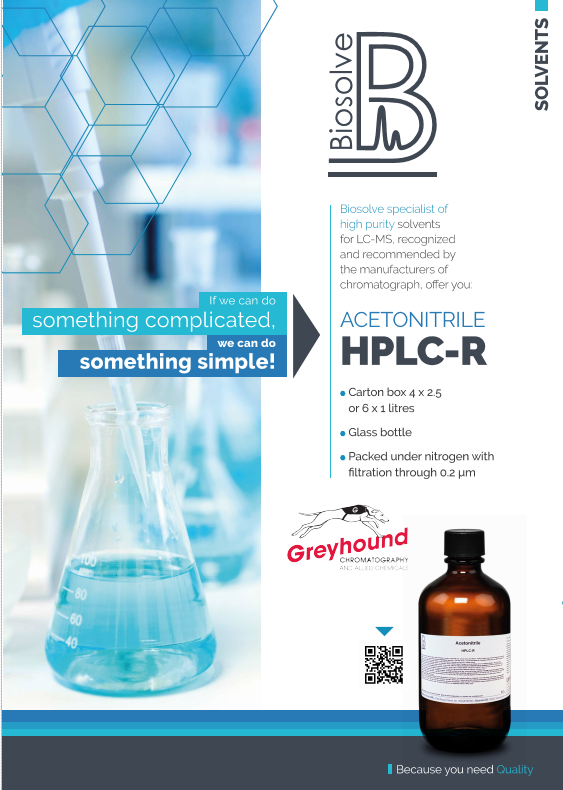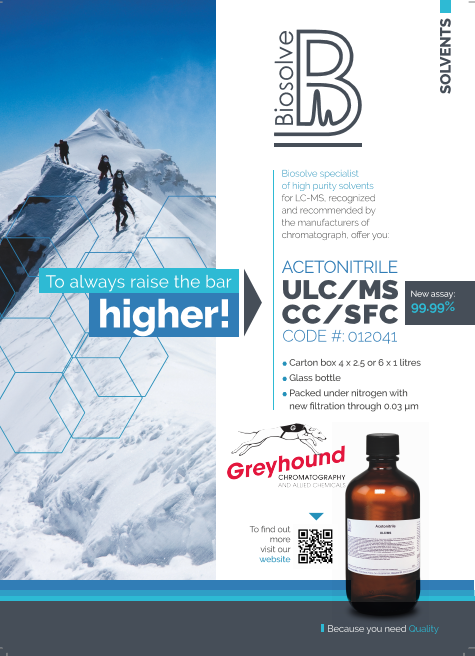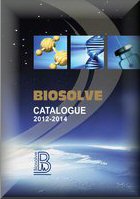Headspace Grade Solvents for analysis of Organic Volatile Impurities

Organic Volatile Impurities (OVI) in pharmaceuticals, commonly referred to as residual solvents, are trace organic volatile chemicals used or produced in the manufacturing of active substances, excipients, or in the preparation of medicinal products.
Appropriate selection of the solvent for the synthesis of medicinal substance is usually a critical parameter in the synthetic process, as it may enhance the yield, or determin characteristics, such as purity, crystal form, dissolution and solubility. Unfortunately many of the solvents are not completely removed by practical manufacturing techniques; therefore, their content should be evaluated and justified.
The International Conference on Harmonisation (ICH) method Q3C, United States Pharmacopoeia (USP) Method 467, and the European Pharmocopeia (EP) method 2.4.24, have set guidelines to identify residual solvents in pharmaceuticals and ensure that these solvents are not above the concentration limits according to the risk they pose for human health. Revised procedures for the identification and quantification of OVI consist of a static headspace extraction coupled with Gas Chromatographic (GC) separation. Static headspace technique is a precise and well-accepted method for the analysis of residual solvents. This technique is used for concentrating residual solvents from the sample preparation into the gas phase, resulting in the improvement of their detection limits in the GC analysis. Samples analysed by this technique may need a suitable solvent for dissolution, and procedues for water-soluble and water-insoluble samples are described 1,2,3, in the full document. For water-soluble samples, use of Biosolve Headspace grade solvents: Dimethylacetamide (DMA), Dimethylformamide (DMF), Dimethylimidazolidinone (DMI) and Dimethylsulfoxide (DMSO) is described in the full document, but other high boiling solvents, such as N-Methyl-2-Pyrrolidone (NMP) have aslo been found to be suitable for Headspace analysis.
Since 2006, Biosolve optimised its headspace grade solvents for accurate analysis of residual solvents in medicinal products. The purity of the solvents specifically evaluated by ananlysis of the Headspace grade solvent against OVI standard solution to ensure the absence of interfering peaks in the GC chromatogram.
The full document demonstrates the compatibility of Biosolve Headspace grade solvents as well as their cleanliness for the analysis of OVI in the Headspace-GC- technique. To do just that Biosolve chose a variety of common process solvents, representing a wide range of elution by the GC analyses. Blanks of each Headspace solvent and OVI standard solutions were prepared by pipetting 1mL of the liquid in to 20mL Headspace vial. Final content of OVI in the standard solutions was calculated with 100mg of tested medicinal sample. The composition and concentration of OVI used as standards are summarised in Table 1 in the main document.
Biosolve Headspace Analysis of OVI
CONTACT US
Tel: +44 (0) 151 649 4000
Email: marketing@greyhoundchrom.com
FOLLOW US
YOU MAY ALSO BE INTERESTED IN OUR NEWSLETTER
You May Also Be Interested In



















